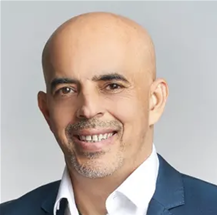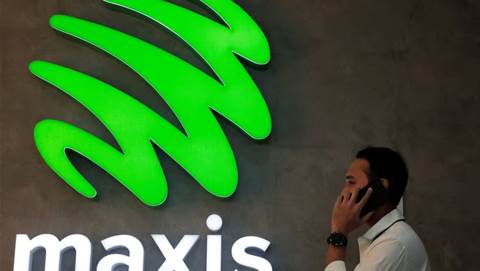In a crowded market, and with the 5G ecosystem for enterprises taking longer to mature, how does Nokia view 5G and how is it positioned to grow? How is Nokia helping communication service providers (CSPs) and enterprises overcome challenges they face in their transformation?
iTNews Asia discusses the state of 5G, learn what’s holding 5G back amongst enterprises, as well as Nokia’s vision and plans going forward with Raghav Sahgal, President of the Cloud and Network Services business at Nokia, on his recent visit to Singapore.
iTNews Asia: While 5G has seen positive adoption with 260 operators globally on board, the business-to-business (B2B) segment, which is expected to drive future revenue growth for 5G, has been slow and yet to take off. What’s holding the market back? Is enterprise 5G a long game that needs to transition more gradually?
Sahgal: While there has been healthy consumer uptake in places like the US and parts of Asia, there have been some challenges. These include not yet realising the ramp-up in more advanced, higher value 5G use cases, beyond connectivity and download speeds, but this market is evolving.
Nokia is bullish about the year ahead in what we are seeing in the transition to 5G Standalone, or SA. The 5G SA architecture is complex, whereas the non-standalone hooks a 5G radio access network to a 4G core, which costs less and is more straightforward.
We feel we are positioned very well with our 5G SA technology and are seeing clear signs of that. We have recently won several deals - Ooredoo Qatar just recently, for example - that have displaced our competitors in the Core Network, and we are taking market share.
At the end of 2024, Nokia had the most 5G Standalone Core operator customers in the industry, with a total of 123; and, based on our estimates, we have a 55 percent market share.
iTNews Asia: What are the factors that can eventually unlock the full potential of 5G (from a B2B perspective)?
Sahgal: Operators know 5G SA is vital and need to get it right with the radio access build-out, the telco cloud, and the 5G core itself.
iTNews Asia: You’ve said that the advantages of 5G go beyond connectivity. What other benefits can 5G bring to industries, enterprises and consumers?
Sahgal: On the industrial and enterprise front, while 5G plays an important role, our approach goes beyond simply deploying a 5G private network. It's about creating an edge computing platform that can support any type of access, whether it's 5G, 4G, Wi-Fi, or wired connections.
This strategy allows companies to avoid fragmentation and manage all connectivity needs in a unified way. We are a leader in various verticals, including mining, energy and manufacturing, where private networks ensure advanced digital experiences for audiences and more efficient management of operations.
iTNews Asia: While cloud and AI are transformational technologies, how critical are networks as a third pillar that can bring the cloud and AI to deliver their potential? How can automation, particularly the use analytics and artificial intelligence, help solve network and service operation challenges?
Sahgal: As CSPs move to 5G SA, they need a cloud-native architecture. This requires strong automation underpinned by AI and analytics to manage increasingly complex networks, which must integrate different technologies such as 2G, 3G, 4G and the future 6G.

A cloud-native architecture allows operators to scale services more flexibly, distribute network functions as needed, and reduce operational costs thanks to advanced automation.
- Raghav Sahgal, President of the Cloud and Network Services business at Nokia
iTNews Asia: Nokia sees the role of network APIs and “Network as Code” platform as a way to give developers’ better and more access to network capabilities. Can this help solve challenges in 5G monetisation for CSPs and enterprises?
Sahgal: That is exactly what Network as Code is designed for – offering CSPs a new way to monetise their 5G investments. Built with a completely cloud-native core, an advanced automation layer and a robust and scalable API platform, this combination allows the delivery of intent-based APIs that are able to dynamically respond to the needs of applications and end users, minimising complexity for developers.
We are focused on more sophisticated APIs than traditional messaging and voice, including advanced features such as quality of service, latency management, and precise device placement.
iTNews Asia: Like several players in the industry advocating change, Nokia also believes realising these future opportunities as dependent on wide ecosystem support. How can ecosystem support help the industry overcoming investment constraints?
Sahgal: When collaborating with partners, everyone wins. Cost can be reduced by leveraging capabilities together rather than bringing everything in-house. It allows for focused development and investment in the areas that make sense for your business while working with partners who are doing the same.
iTNews Asia: Where is Nokia now in building this ecosystem?
Sahgal: Nokia’s network API strategy is centered around connecting multiple API ecosystems through its Network as Code platform. By offering operators the broadest range of network exposure options, paired with robust multi-tier API security, the platform ensures that operators can confidently provide developers with simplified access to network functionalities.
Unlike other competitors who are focused only on the network-side integration, Nokia works both ends of the network API ecosystem - connecting to operator networks and connecting end users (enterprise/developers) to the platform. We prioritise the developer experience and provide all the tools required to make network capabilities easily consumable through our platform.
iTNews Asia: What milestones has Nokia reached?
Sahgal: Nokia and T Wholesale, which is part of Deutsche Telekom, one of Europe’s largest operators with more than 250 million subscribers, just announced a commercial deal that will make two of the operator’s network API use cases, SIM Swap and Number Verification, available to developers through Nokia’s Network as Code platform with developer portal.
iTNews Asia: What else needs to be done to foster greater innovation and collaboration?
Sahgal: More broadly, since launching the Network as Code platform in September 2023, Nokia’s ecosystem of Network as Code platform partners has grown to 55. Beyond DT, the roster now includes BT, Orange, StarHub, Telefonica, and Telecom Argentina.
Nokia’s commitment to API monetisation extends beyond network-side aggregation and includes hyperscalers like Google Cloud; Communications Platform as a Service (CPaaS) platform providers such as Infobip; vertical independent software vendors like Elmo; and the world’s largest public API hub through Nokia’s acquisition of Rapid.
iTNews Asia: Looking at the next few years, where do you see as the existing (and future) opportunities will emerge in the enterprise space and industrial projects based around 5G networks? At the same time, what do you see as challenges that can hold back the growth of 5G, and what can we do to overcome them?
Sahgal: The enterprise and industrial sectors are poised to benefit significantly from 5G private wireless networks, particularly in automation, IoT, and digital transformation initiatives. 5G private wireless networks enable ultra-low latency, allowing for real-time automation, predictive maintenance, and AI-driven quality control.
Other benefits include connectivity that supports autonomous robots, AGVs (Automated Guided Vehicles), and drone-based inventory whereas in asset-intensive industries like ports, mining, or oil and gas, 5G private wireless networks can be leveraged for remote equipment operation.
In addition, edge computing combined with 5G private wireless networks allows enterprises to process data closer to the source, supporting advanced technologies like AI to bring innovative operational technology use cases to boost efficiency, productivity, worker safety, and sustainability.
The next three to five years will see 5G private wireless networks driven transformation in industries like manufacturing, logistics, healthcare, mining, ports, and smart cities. However, its success hinges on overcoming cost, regulation, security, and integration challenges. Enterprises that proactively invest in private 5G private wireless networks, edge computing, and AI-driven automation will have a significant competitive advantage.









